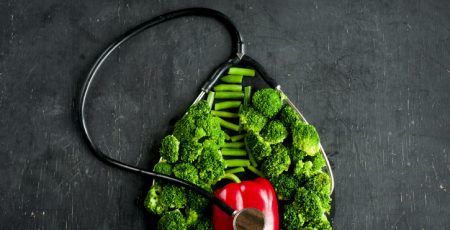30 Aug Grilling Season’s A Good Time To Try More Spices, Less Salt
Everyone needs to ingest a certain amount of sodium for the healthy functions of the body, but too much can be bad for your health, especially if you have high blood pressure. Luckily, it’s grilling season; a perfect time to try all kinds of herbs and spices to liven up your food.
Herbs and Spices to Try
Here is a list of herbs and spices that can add a lot of flavor to your food, along with suggested uses for them:
Basil
Sweet basil is a delicious addition to any Italian food and also can be delicious paired with berries, peaches, apricots or other fruits.
Cinnamon
This spice can really enhance meat dishes such as lamb or beef. And it’s a delicious flavor to add to whole grain muffins, toast, or pancakes.
Smoked paprika
This spice, added to egg dishes, can give you the taste sensation of smoky bacon. It can also be great added to tomato sauce or a fruit salsa.
Thyme
Bean dishes and roasted vegetables can really bring their flavors forward with the addition of thyme.
Cumin
Cumin’s unique and toasty/smoky taste adds a satisfying flavor layer to fish and to Mexican food.
Rosemary
More plant-like in flavor, rosemary adds a woody and lemony flavor that complements oily fish, roasted chicken or lamb, and roasted root vegetables.
Mint
Fresh mint can find a place in all kinds of dishes, from desserts to main courses. It adds a sweet and cooling taste to fruit cups, carrots, cucumbers, yogurt dips, lemonade, and iced tea.
Parsley
Also a “plant-tasting” herb, flat-leaf parsley gives dishes a light and fresh touch of flavor; curly parsley adds a peppery touch. Both go well in egg dishes, seafood, salads, and potatoes.
Curry powder
Curry is actually a blend of spices including cumin, coriander, and turmeric. Its strong and complex flavors go very well in eggs scrambled with vegetables, tuna salad, and Indian dishes such as lentil potato stew.
Garlic
Much touted and much loved, garlic needs little cheerleading to encourage people to cook with it, but its health benefits might be more extensive than you know. Based on a study published by the National Institutes of Health, research has shown that garlic has the potential to provide cardiovascular protection by reducing hypertension and total cholesterol, and also CRP, PWV, and CAC, which are related to atherosclerosis. Interestingly, the most consistent benefits were shown in studies that used aged garlic extract (AGE).
Turmeric
This ochre-colored, smoky spice contains a yellow pigment called curcumin, which has long been used in Ayurveda (Indian traditional medicine) to treat a number of diseases. Western medical studies have revealed that curcumin regulates enzymes and other substances in the body that play a role in inflammation and cancer. Since many respiratory diseases such as asthma, chronic obstructive pulmonary disease, acute respiratory distress syndrome, pulmonary fibrosis, and acute lung injury are either caused by or affected by inflammation, turmeric could be an excellent and beneficial spice to add to your diet.
Most of the studies on the effects of curcumin on pulmonary disease have been done in vitro or using animals, and only two studies have been done in COPD patients. In one small randomized control trial, curcumin was associated with reduced severity and frequency of respiratory symptoms in patients with COPD, and these improvements were accompanied by reduced oxidative stress and inflammation. An observational study also suggests that better pulmonary function may be associated with greater curcumin intake. Nevertheless, in humans, curcumin in its natural state seems to have poor bioavailability (the proportion of a drug or other substance that enters the circulation when introduced into the body and that is able to have an active effect), making it necessary to use adjuvants (additional substances that enhance the body’s response to a substance) or other more complex methods to help carry the substance into the tissues. Further studies are being done on this spice and its health effects.
Capsaicin
Our bodies contain a thing called cation channels in a broad range of cell types, including those thought to play a key role in respiratory diseases such as asthma and COPD. These ion channels can be activated by chemical or physical stimuli such as temperature, menthol, capsaicin, and acrolein, which leads to the conclusion that these stimuli could play a role in the symptoms of respiratory disease including airway inflammation, airway hyper-reactivity, mucus secretion, and cough. Capsaicin cough hypersensitivity has been identified in patients with COPD, interstitial lung disease, bronchiectasis, and pulmonary infections. In addition, activation of these ion channels by capsaicin or acrolein is involved in blood vessel constriction, regulation of blood pressure, and the blood vessel constrictive response to low oxygen. The pulmonary artery in patients with COPD seems to be more sensitive to activation of these ion channels than in people with healthy lungs.
Capsaicin is found in chili peppers, those colorful little devils that add a kick to our food and at the same time produce a sensation of burning in any tissue with which it comes into contact. Red pepper flakes, cayenne powder, and fresh chili peppers such as jalapenos and serrano peppers are easy to add to many dishes, especially Mexican and Italian food. Acrolin is found in tobacco smoke and is also produced when burning fat to the smoking point. Although many enjoy these foods to add heat and flavor, COPD patients may be hypersensitive to the activation of ion channels caused by these products. Studies are being developed to see whether blocking these ion channels by new drugs can relieve symptoms in patients with respiratory diseases.
Information for this article was obtained from Health Net, the National Institutes of Health, the National Center for Biotechnology Information, and PubMed.





No Comments